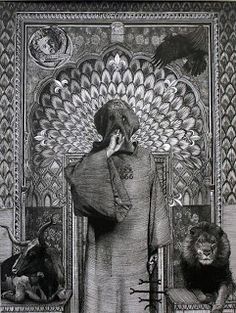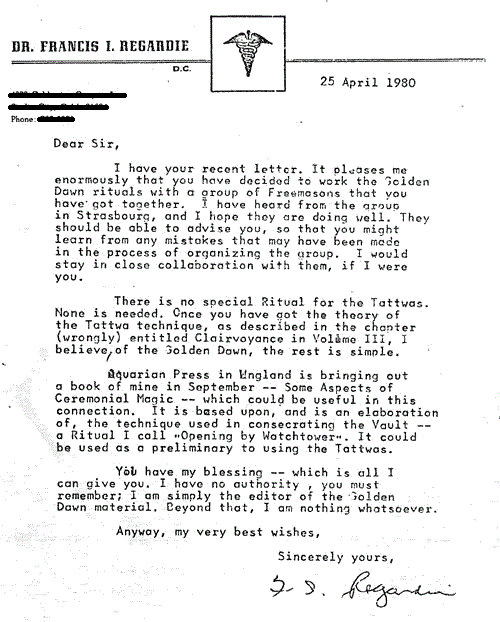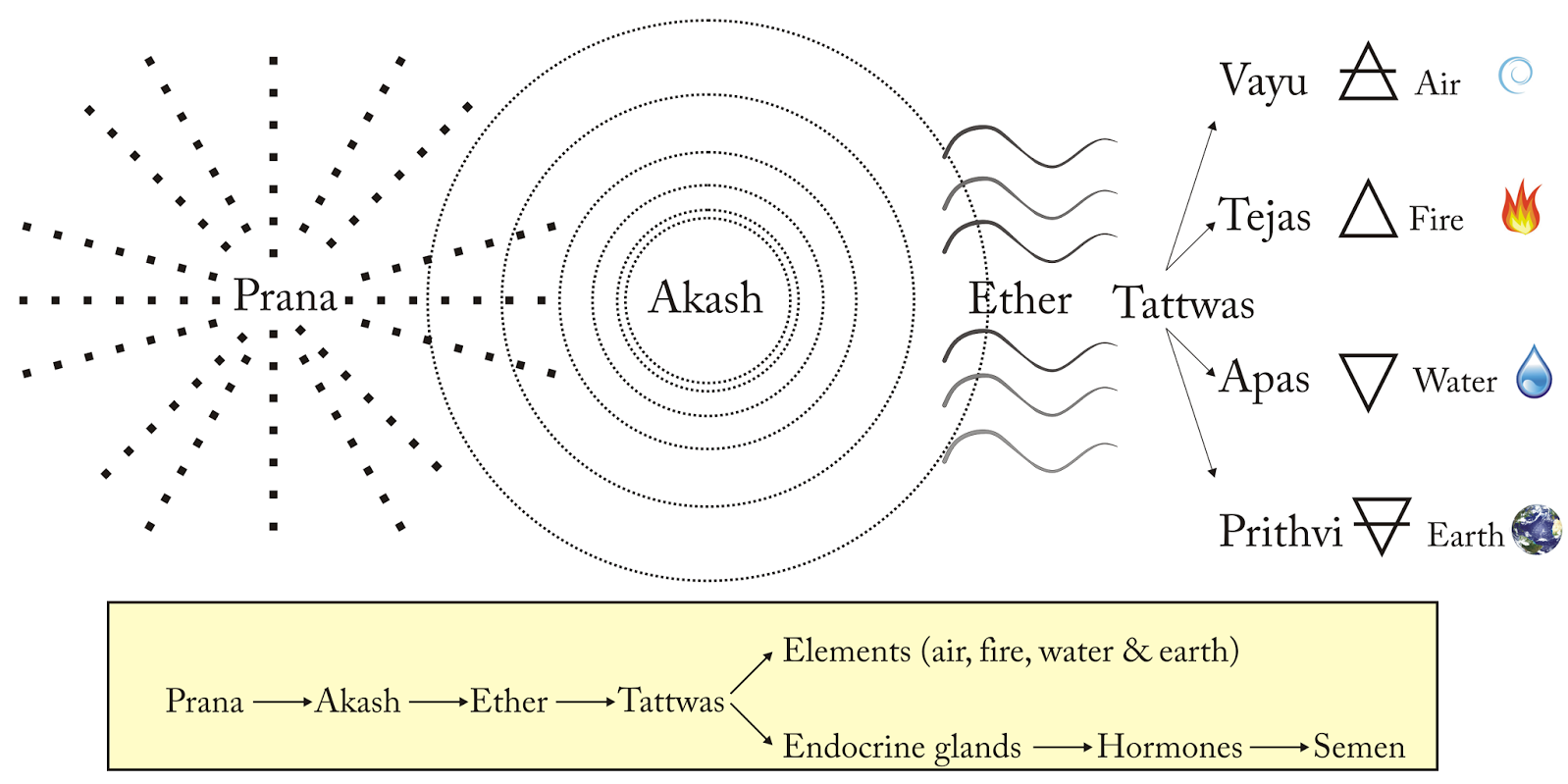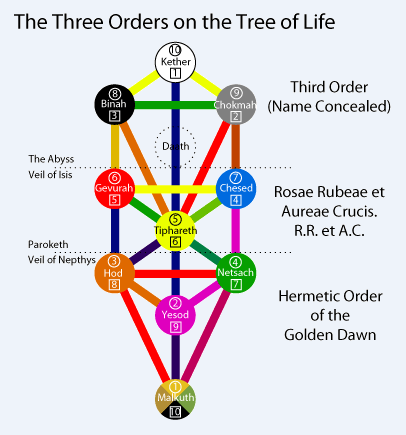It looks like you're using an Ad Blocker.
Please white-list or disable AboveTopSecret.com in your ad-blocking tool.
Thank you.
Some features of ATS will be disabled while you continue to use an ad-blocker.
17
share:

Trapped inside your prison,
I will gladly share my key.
Be warned... for it's my only one,
Don’t lose it or lost we'll be.
Freemasons have all the fun!!

An Introduction to the Tattwas
Source: GoldenDawnPedia
What are Tattwas? The word Tattwa, alternately spelled tattva, tatwa, tatva, is Sanskrit basically meaning “essence,” “principle,” or “element.” The concept of the Tattwas date back at least as early as 2000 BC and they are said to predate even the Greeks’ own knowledge of the elements of nature, and in fact that the Greeks may have learned of the elements from the Indian gurus. In a better context, the Tattwas are the essence of nature through which we not only experience the world around us, but give rise to the very concept of awareness. This comes into play later when we learn the relationship of the five primary Tattwas to the five senses, but they basically are the elements that lead us to believe that we exist.
The grades of the Esoteric Order of the Golden Dawn are all attributed to one of these five elements of the pentagram: Zelator to Earth, Theoricus to Air, Practicus to Water, Philosophus to Fire, and Spirit in the Portal grade, which is not of the Outer Order of the Golden Dawn. We are given various invocations and symbols to work with each element per grade, so you might ask why are the Tattwas, drawn from the Eastern Tradition, called on and employed in the Golden Dawn system, which is predominantly Western? Several members of the Golden Dawn back in the early days of the Order were also members of the Theosophical Society, which was and is H.P. Blavatsky’s Western school that teaches mostly Eastern philosophy.
The base knowledge of the Tattwas was primarily derived from the Theosophists who derived their knowledge of the Tattwas primarily from Rama Prasad. This Indian guru is the author of the acclaimed work titled “Nature’s Finder Forces,” a book on the subject of the Tattwas which was written as a result of much interest of his previous essays published in The Theosophist. Also, in the original curriculum of the order, lessons on the Tarot were not given until one was in the Second Order. Initiates were given lessons on one trump at a time, appropriate to the pathworking of the degree of which they were initiated. Tattwas both filled a need for pathworking excerises and also there is hardly any better set of symbols to tap into the powers of the elements.

files.abovetopsecret.com...
edit on 7-9-2017 by eisegesis because: (no reason given)
Akasha

Vayu
Tejas-Agni
Apas
Prithivi

I’ll admit, I wanted to add more to this thread, but it got late and my sleep is horrendous. I may add some things in the future that will certainly make one question their surroundings (like actual Rituals). Is anyone here still interested in doing that?
Anyway, thanks for reading.
There are five primary Tattwas, each relating to one of the five elements of nature. The first of these Tattwas is called Akasha, and is traditionally symbolized in the Golden Dawn system by a black or dark indigo ovoid or egg, though it is not uncommon to see this Tattwa as a black circle when studying the Eastern system of Tattwas in their relation to the chakras. Akasha relates to the element of spirit and the void of space, or aether. It is black to reflect the very color of void, and is reflected not only in the space between heavenly bodies, but also that very element that permeates all things and is between all atoms.
In addition, this Tattwa is influenced in part by the planetary energies of Saturn, which can quickly be identified by the egg/ovoid shape and the color of black or deep indigo which both are correspondences of Saturn. Saturn also relates to silence and the invisible, which are very indicative of the nature of Akasha. This Tattwa is potential for existence, and stands on the threshold between the infinite macrocosm and the finite microcosm. This Tattwa is a fitting representative of the nature of spirit and is thusly attributed to the crown or sephirah of Kether on the Tree of Life.

Vayu
The next Tattwa in course is Vayu. Vayu is traditionally symbolized by a blue circle and in some cases in study of Eastern philosophy by six gaseous dots in motion forming a hexagram. The term Vayu comes from the same root as the Sanskrit word for motion which is very indicative of the active element of Air to which this Tattwa relates to.
The color blue of Vayu is not a prismatic blue, but of a light, smoky blue relating to the color of the sky on a clear day. While this Tattwa is invisible like Akasha, it is the first of the Tattwas to be able to be felt, and relates to the sense of touch. This Tattwa also shares the quality of vibration and sound that relates to Akasha. This principle relates to aspects of the element of air, the mind and to breathing, and thus on the body corresponds to the Da’at center where air enters and leaves the body.
Tejas-Agni
The Tejas or Agni Tattwa, the fire Tattwa, is next. Tejas means “sharp”, and is symbolized by a red triangle. The color red of this Tattwa is derived from the color associated with heat and fire. As you may have noticed, the colors of the Tattwas are associated with their reflection in the world of Assiah, in the natural world. Fire is the source of heat and light, and thus this principle is the first to be visible.
While Tejas is associated with the sense of sight, it also shares in the respective senses of Akasha and Vayu. As Tattwa relates to incandescence and is the first visible Tattwa being associated with light itself, in the course of the reflection of the Tattwas in the personality and soul, it relates to the ego, the face we outwardly shine and share with the world, or the Ruach in the personality, which is seated in the heart and Tiphiret center.
Apas
We are next brought to the Apas Tattwa. The common man with only a basic education in physical sciences understands the relation of the Moon upon the tides and can therefore easily understand a direct relationship between the Moon and the Element of Water. The learned Qabalist will quickly associate the image of a crescent with the sephirah of Yesod, and thus to the associated genital area on the human form and the sexual organs. The color of the Apas Tattwa should reflect the color of the Moon itself. Some say this is white, some say it is silver.
The color should in the very least be a pale color, and it would be good here to note the word used for the Moon in some languages, as it is with the Hebrew Levanah, has a common root with the word “pale”, and is often translated as “pale one.” A color very similar to the moon is most appropriate. This Tattwa is sometimes depicted as a semicircle in contrast to its common form of a crescent. We know the Moon goes through phases, and this alternate form no doubt arose from this natural cyclic change in shape.
Prithivi
The final Tattwa is Prithivi. This Tattwas refer to what we call in the Western Mysteries the Element of Earth. Analysis of the imagery associated with Prithivi may cause a bit of confusion. The element of Earth here is apparently being presented with the color we normally associate with the Element of Air. Some would associate the color with the Sun in its role of being the source of all matter- as quite literally the entirety of every planet in our solar system, with the exception of cosmic debris, is comprised entirely of condensed solar atoms.
I am not entirely at odds with this perspective, and actually I rather enjoy it. This does not however fit in with the color derivations of the other four Tattwas being so derived from their manifestation within the material plane. In actuality, this color has most likely been miscalculated in its travels or translation into the Western world, just as the blue for the Vayu Tattwa. This color more appropriately would be a brownish yellow, to reflect an actual type of earth, of the arid dry earth of the desert, and not the prismatic yellow. Additionally, Prithivi is attributed to the sephirah of Malkuth and to the feet because of its association with the Earth Element and the cohesive nature of the Tattwa.

I’ll admit, I wanted to add more to this thread, but it got late and my sleep is horrendous. I may add some things in the future that will certainly make one question their surroundings (like actual Rituals). Is anyone here still interested in doing that?
Anyway, thanks for reading.
edit on 7-9-2017 by eisegesis because: (no reason given)

so what does it all mean?
did they tatooine successfully?
did all their pranic poking affect their Akashic standing?
edit on 7-9-2017 by dashen because: (no reason given)
a reply to: eisegesis
You seem to be very well researched in all things esoteric and occult related. So you obviously function at a higher wavelength than most. Can I join your cult when you make one?
On a serious note, I always appreciate your threads because they're usually right up my alley, but I personally don't have the time to do my own research, so thanks for bringing these here. I'd love to sit at a coffee table and pick your brain.
You seem to be very well researched in all things esoteric and occult related. So you obviously function at a higher wavelength than most. Can I join your cult when you make one?
On a serious note, I always appreciate your threads because they're usually right up my alley, but I personally don't have the time to do my own research, so thanks for bringing these here. I'd love to sit at a coffee table and pick your brain.
The order of 5 and the order of 8 are very interesting to me. Many lost and forgotten traditions utilized them, however, on more philosophic level,
than we might want to believe as westerners. I see here, the golden dawn are again mixing apples and peanuts, but that's normal for them. They seem to
be "able" do do this with fitness. On the other side, I never mix apples and peanuts... but what do I know.
Sure, if you take a piece of something and a piece of other thing a relation will appear in your mind, in instance. And there's nothing wrong here, but I'd just advise people to hesitate and measure twice before conjuring a solidified opinions. That's for the golden dawn, obviously I'm not huge follower or fan of their approaches.
In the end I'm still curious to what extent 5 can be dominant order. I don't think it is, yet many civilizations respected it greatly. The truth could be around the corner, usually it's like that, I just can't see it for now.
Sure, if you take a piece of something and a piece of other thing a relation will appear in your mind, in instance. And there's nothing wrong here, but I'd just advise people to hesitate and measure twice before conjuring a solidified opinions. That's for the golden dawn, obviously I'm not huge follower or fan of their approaches.
In the end I'm still curious to what extent 5 can be dominant order. I don't think it is, yet many civilizations respected it greatly. The truth could be around the corner, usually it's like that, I just can't see it for now.
I will venture to say -
ho hum..
Whenever you see this sort of stuff, it looks very impressive, like some secret knowledge but after contemplating it, you know nothing more than before you read it.
Its like when I read the book - The Secret Teachings of all Ages by Manly P. Hall. It all looks very impressive, but in the end it is empty.
ho hum..
Whenever you see this sort of stuff, it looks very impressive, like some secret knowledge but after contemplating it, you know nothing more than before you read it.
Its like when I read the book - The Secret Teachings of all Ages by Manly P. Hall. It all looks very impressive, but in the end it is empty.
a reply to: eisegesis
As a Theosophist and a Freemason, I'd be very interested.
Such endeavors of study are far from empty, for we gain understandings, insights, and creative intuitions when we ponder and peer deeply into the fundamentals of existence. Archetypes, elementals, and tattvas can expand our consciousness even more profoundly than when we investigate atoms and subatomic particles.
I may add some things in the future that will certainly make one question their surroundings (like actual Rituals). Is anyone here still interested in doing that?
As a Theosophist and a Freemason, I'd be very interested.
Such endeavors of study are far from empty, for we gain understandings, insights, and creative intuitions when we ponder and peer deeply into the fundamentals of existence. Archetypes, elementals, and tattvas can expand our consciousness even more profoundly than when we investigate atoms and subatomic particles.
originally posted by: Sahabi
a reply to: eisegesis
I may add some things in the future that will certainly make one question their surroundings (like actual Rituals). Is anyone here still interested in doing that?
As a Theosophist and a Freemason, I'd be very interested.
Such endeavors of study are far from empty, for we gain understandings, insights, and creative intuitions when we ponder and peer deeply into the fundamentals of existence. Archetypes, elementals, and tattvas can expand our consciousness even more profoundly than when we investigate atoms and subatomic particles.
Funny how those things always seem to come back around and be interconnected, eh? The ancients who documented their wisdom were not unsophisticated knuckledraggers as a lot of people think.
new topics
-
The Good News According to Jesus - Episode 1
Religion, Faith, And Theology: 21 minutes ago -
HORRIBLE !! Russian Soldier Drinking Own Urine To Survive In Battle
World War Three: 2 hours ago -
Bobiverse
Fantasy & Science Fiction: 5 hours ago -
Florida man's trip overseas ends in shock over $143,000 T-Mobile phone bill
Social Issues and Civil Unrest: 5 hours ago -
Former Labour minister Frank Field dies aged 81
People: 7 hours ago -
SETI chief says US has no evidence for alien technology. 'And we never have'
Aliens and UFOs: 9 hours ago -
This is our Story
General Entertainment: 11 hours ago
top topics
-
President BIDEN Vows to Make Americans Pay More Federal Taxes in 2025 - Political Suicide.
2024 Elections: 14 hours ago, 16 flags -
SETI chief says US has no evidence for alien technology. 'And we never have'
Aliens and UFOs: 9 hours ago, 6 flags -
Florida man's trip overseas ends in shock over $143,000 T-Mobile phone bill
Social Issues and Civil Unrest: 5 hours ago, 6 flags -
Former Labour minister Frank Field dies aged 81
People: 7 hours ago, 4 flags -
Ode to Artemis
General Chit Chat: 15 hours ago, 3 flags -
This is our Story
General Entertainment: 11 hours ago, 3 flags -
Bobiverse
Fantasy & Science Fiction: 5 hours ago, 3 flags -
HORRIBLE !! Russian Soldier Drinking Own Urine To Survive In Battle
World War Three: 2 hours ago, 1 flags -
The Good News According to Jesus - Episode 1
Religion, Faith, And Theology: 21 minutes ago, 0 flags
active topics
-
Police clash with St George’s Day protesters at central London rally
Social Issues and Civil Unrest • 44 • : xWorldxGonexMadx -
Should Biden Replace Harris With AOC On the 2024 Democrat Ticket?
2024 Elections • 48 • : marg6043 -
"We're All Hamas" Heard at Columbia University Protests
Social Issues and Civil Unrest • 275 • : marg6043 -
HORRIBLE !! Russian Soldier Drinking Own Urine To Survive In Battle
World War Three • 11 • : JooTunnels -
The Good News According to Jesus - Episode 1
Religion, Faith, And Theology • 0 • : randomuser2034 -
Florida man's trip overseas ends in shock over $143,000 T-Mobile phone bill
Social Issues and Civil Unrest • 11 • : pianopraze -
Who are the Russians?
New World Order • 202 • : twistedpuppy -
1980s Arcade
General Chit Chat • 26 • : xWorldxGonexMadx -
SETI chief says US has no evidence for alien technology. 'And we never have'
Aliens and UFOs • 31 • : andy06shake -
President BIDEN Vows to Make Americans Pay More Federal Taxes in 2025 - Political Suicide.
2024 Elections • 69 • : underpass61
17
